South Korea Economy: Miracle or Delusion?
By Ana C. Galvis-Martínez
From the first day that I landed in South Korea and for more than 15 days after I could not stop wondering if miracles really existed. It has been a challenge to me to understand how a country of 100.150 square kilometers [about the the size of the state of Kentucky), with 50.42 million inhabitants had managed in 70 years to overcome the colonial invasion of Japan and the internal war that divided the country into North Korea and South Korea, and to rise to the select list of so-called “developed countries”.
Walking though the center of Seoul is an experience that challenges the mind. It is a place where the west and the east are playfully mixed together, property of multinational corporations like Kia or Hyundai contrast with Buddhist temples and imperial palaces that try to preserve the memory of a Korea that only a few centuries ago honored the contemplative life as a way to illuminate the spirit and agriculture as its principal economic activity. Huge shopping centers filled with Christian Dior clothes contrast with popular markets, where men and women hawk their wares to passersby. The metro links together in a web every corner of the city and its cars are so spotless as to force one to ask if the population is an exemplar of civic-mindedness or are the cleaners so conscientious in collecting trash as to leave not the slightest trace.
Stay in the loop with Food First!
Get our independent analysis, research, and other publications you care about to your inbox for free!
Sign up today!
The economic indicators are overwhelming: a gross national per capita product of 34,620[i] , annual economic growth of 3.3%[ii], a Gini co-efficient of 31.1[iii] that puts it in the range of distribution of income comparable to France or Australia. The figures can make one think that the capitalist system, if it is carried out “correctly”, really does have a miraculous potential. For more than 7 days I walked the streets of Seoul astonished and full of curiosity about this place where beggars and executives walked around totally absorbed in their smart phones.
After several e-mails and thanks to the support of my friends I got what I wanted: an interview with Korean social activists. On September 28 at 9 in the morning we three women – three stories – came together in a cafe of the central station of Seoul:
Mrs. Yoon who is a member of La Via Campesina, an international movement which brings together millions of peasants, and is an advisor to the Korean Women Peasant Association (KWPA, its initials in English) and from the Korean Peasant League (KPL, its initials in English), Ji Young Moon who works in the area of marketing for the Hansalim[iv] cooperative, who kindly offered herself as translator in case Mrs. Yoon should need one, and myself. I started our conversation a bit nervous. In slow and clear English I asked them, “Is there really an economic miracle of the Hanging River?” To my great surprise they both women answered in unison and with equal determination and force: “No!”, said Mrs. Yoon, and “Yes!” said Ji Young.
In the Korean cultural code older people have greater status, that was how Mrs. Yoon started off by explaining. “This miracle that they talk about is based on the exploitation of farmers and workers; its greatest effect has been the polarization that now exists within the population”, she went on, “in 1910 Korea was invaded by Japan, that invasion culminated in 1945 with the defeat of Japan in the Second World War. After that, 50 years ago during the cold war The United States of America came here to Korea, then the peninsula of Korea turned into a show case where the capitalist model (USA) and the communist one (USSR) tried to show which was better, that is why the division between south and north. During the occupation and the war the ones who suffered most were the peasants and workers”. I could not stop looking at her deep, melancholic and dignified eyes. “As a result of the polarization, at present in Korea from three to four people a day commit suicide, the unemployment of youth is about 60% and 70% of the workers have temporary contracts with no stability. On top of that the rich people are extremely arrogant, a little while ago the daughter of the owners of the Asiana airlines forced the plane with more than 200 persons aboard to return to the airport just because she did not like the peanut that one of the stewardesses gave her”.
“This miracle that they talk about is based on the exploitation of farmers and workers; its greatest effect has been the polarization that now exists within the population”
Listening to Mrs. Yoon I could not stop thinking about the similarities between what is happening in South Korea and what happens in Colombia or Mexico. Then I asked what strategies are there that the social organizations to which she belongs are using to combat the polarization of society. During a several minutes of discussion in Korean between she and Ji Young, Mrs. Yoon replied “Basically there have been two strategies, the first is organizing the peasants and workers to demand that the government carry out policies that favor them, the second is to create self-management proposals, for example cooperatives, to generate self-employment”.
I immediately replied, have they worked?
“Some governments at the local level have listened to the requests but the central government does not listen, it is a government of the right . . . now the social struggle is losing force, mainly because it is not showing any results and because the farmers have grown old. The young realize that agriculture does not pay, so they do not practice it. They are all falling into the system’s game.
The workers have to work harder in order to survive, the students have to study harder to get good grades and find better jobs, and the farmers are getting old, so then struggling and making demands of the government becomes very difficult. The second strategy is working better, proposals for cooperatives are being created that at least help the young to have better job prospects, but these are short term solutions, the struggle and the demand for rights is always important. The strategy of self-management works but it does not change the system”.
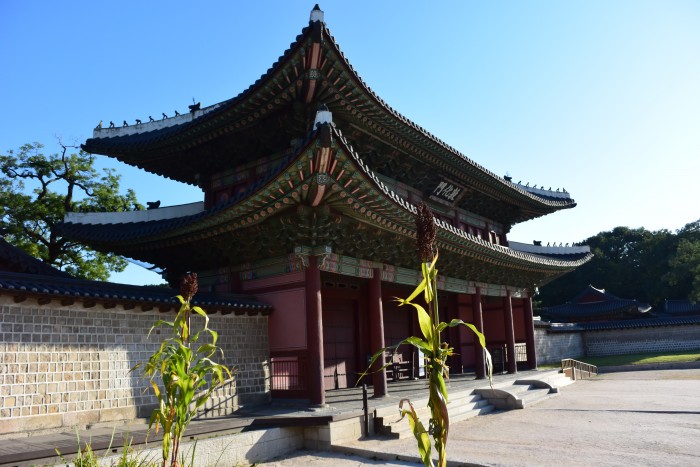
It is common to see edible plants in the streets of Seoul. Here, plants of sorghum in the entrance of Changdeokgung Palace.
I asked what is the state of agriculture in Korea. Ji Young translated the questions, there was an exchange of words in Korean and then some contagious laughter filled the place. Mrs. Yoon said, “Some people say that agriculture in Korea is not in crisis, that is has simply disappeared”.
Then she stopped laughing and went on, “Agriculture in Korea is very undervalued and attacked, we have only 23% food self-sufficiency and only 5% of the population is dedicated to agriculture. The little agriculture that there is is mainly conventional, full of pesticides and insecticides, There is an emerging certified organic agriculture that is being absorbed by the government, they have a national seal and in order for the certificates to be issued the man of the house has to fill out the requests, that is an oppressive mostly for the peasant women”. Agroecology is an option that helps a lot, but it is not supported by the government. The economic model works for cars and electronic devices to be manufactured which are exported and then cheap food is imported from other countries. Everything is changing, for example, the social struggle succeeded in getting the protection of the production of rice in Korea, one can only import rice for processed food and not for fresh consumption, but this rule has been dismantled and the free market for rice was opened. That is very bad for the Korean farmers. The KPWA and KPLf fight against this, we fight against the Transpacific Free Trade Agreement and the treaties of free trade, because they greatly affect the Korean peasants”.
What is your role as leader of a peasant organization, I asked Mrs. Yoon.
“Since 2006 I am no longer a leader, I am just an advisor. Nobody wants to be leader now, it is difficult. Korean farmers are isolated and individualized; they do not carry out collective work. So then the leader has to stop his or her work on the
farm to be able to carry out the work of leader and nobody helps, it is very difficult and that weakens the movement. I am now just an advisor and I do a lot of work promoting collective agriculture, and I also present demands from the peasant women to the government”.
The last question that I was able to make to Mrs. Yoon was what are the challenges for peasant women in Korea?
“From the social perspective Korea is a culture dominated by men, women have much lower status. Of all the farmers in Korea 40% are women, the majority of them hold other jobs besides agriculture in order to survive, they only legally own between 10 and 20% of the land that is cultivated and the men are the ones who own the machinery, the land and the installations for agricultural work. In general women perform unpaid farm work, the farm work of women is not recognized”.
“Agriculture in Korea should be re-established as an important economic activity in which women play a leading role. Women must organize themselves, international
solidarity is needed so that those who make policies take into account the demands of farming women, is it necessary to support and strengthen the feminine peasantry.”
Mrs. Yoon had to catch the train; the time for our conversation had run out. We then walked in silence to the elevator and I thanked that woman with the deep eyes for having shared with me her experience and for the dedicated work that she did day by day, we embraced and said goodbye.
Ji Young and I took the metro to the commercial zone of Seoul, then after a couple of beers
Ji Young said to me “of course there has been a ton of repression, but there is a miracle, look at all the money and progress that there is Korea”, then she added “I am full of hope, the cooperative where I work has 400 workers, just in Seoul it has 73 shops and 127 in the rest of Korea, improvised 2% of the Korean population (some 530,000 homes) with organic and local food. By shrinking the distance between consumers and the producers we have been able to have the producer received 75% of the price that the consumer pays. Our consumers are mainly women for the middle upper class who want to feed their families well and who understand that imported food produced by industrial agriculture threatens the health of their families. We hope to grow and even in the future to import organic sugar produced in the most sustainable way possible . . . we are an example of organizing the power of the consumer at a world level, our producers have three mechanism for certification: one that they give to the government, the second with the parameters of the cooperative applies among producers and the third that a delegation of consumers verifies. Of course one must continue the struggle, I greatly respect the position and experience of Mrs. Yoon, but self-organization and education are an effective option”.
“of course there has been a ton of repression, but there is a miracle, look at all the money and progress that there is Korea”
We spent the rest of the day drinking beer, talking about feminism and about our experiences traveling through different countries. A few times we interrupted our conversation and Ji Young accompany me to smoke a cigarette hidden as an adolescent, “it’s that here there are men who treat women who smoke very badly, it’s better to avoid problems”. A few hours later, and a bit dizzy from a few beers too many, I got on the metro and navigated my way back ?with the help of a wrinkled map in my purse.
The next day, I went walking along the polluted shores of the Hanging River, for several miles looking for a place to eat and all that I could find were Seven Eleven type liquor stores where people formed endless lines to buy instant Maruchan brand soup and potato chips. It reminded me a lot what in the United States are known as food deserts, although this one was buried in opulence. I could not stop thinking that in Korean society sooner or later one would have to take the time to ask if what they call a miracle is no more than an delusion and based on the answer, to recalculate which way to direct one’s efforts to continue doing what for millennia they have done: keep alive a culture that has with courage faced invasion and oppression.
[i] http://data.worldbank.org/indicator/NY.GNP.PCAP.PP.CD
[ii] http://www.worldbank.org/en/country/korea
[iii] https://www.cia.gov/library/publications/the-world-factbook/rankorder/2172rank.html
[iv] more info: http://orgprints.org/24218/7/24218.pdf
This essay was written after a visit to South Korea in September 2015 to assist to the first international meeting of ISOFAR. It was originally written in Spanish and kindly translated by a volunteer of the translation team of Food First, and some corrections were done by the author. The author is deeply thankful to the anonymous translator.

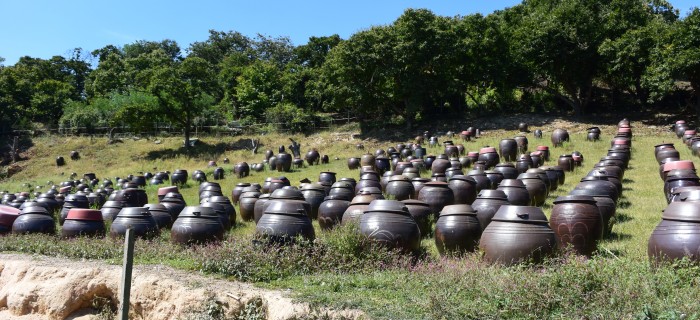
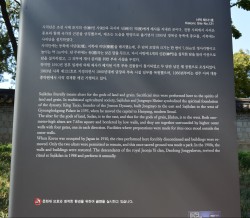

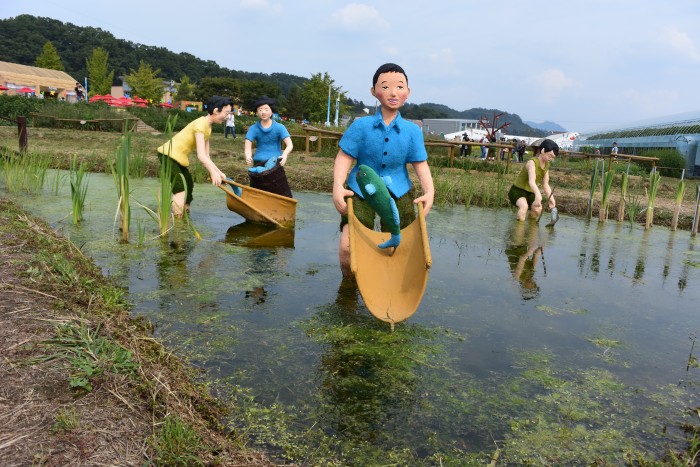
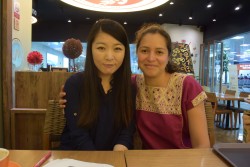
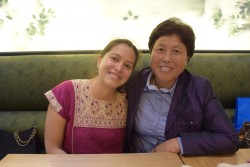
 Help Food First to continue growing an informed, transformative, and flourishing food movement.
Help Food First to continue growing an informed, transformative, and flourishing food movement.




